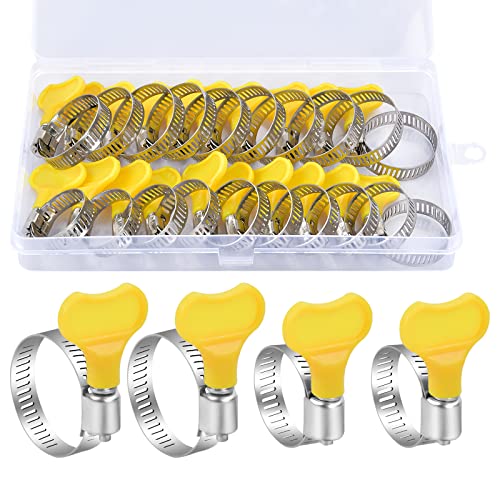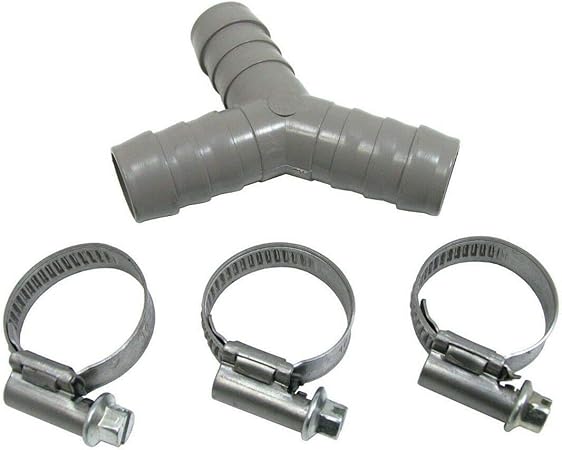This is one of those jobs you’ve probably never given much thought to until it comes time to install a washing machine in a new house and everything isn’t quite set up the same as it was in the old place. Maybe the waste pipes under the sink are all different, or perhaps you can’t even see anywhere to attach the hose to. Well worry not, we have all bases covered here, so continue on and read our guide.
Connecting Washing Machine Waste Pipe
Usually, your waste trap, the plastic piping under the sink, will have a spare spigot to attach your drain hose to. These are the little plastic funnels that stick out of the side. On a lot of sinks, they are free to rotate so can be moved into variable positions.
Before you go installing your waste pipe you first want to check that there is no blanking cap on the spigot. Sometimes they come with a little cap that blocks the spigot off. This is to stop any smells or indeed water from leaking out if the spigot is not in use. So if you see on of these in there, make sure to remove it first.
I have illustrated an image below for you to make it easier to see what they are.

You want to push your grey waste pipe onto one of these spigots, but make sure you have a jubilee clip on the hose first, this should be nice and loose and just floating for the time being. If yours look like the image above with the “ribs” on them then this means they can be cut down to accommodate different hose widths. You probably don’t need to bother with this however and should just leave it as is.
Once the waste hose is connected you can tighten up the jubilee clip to make the hose really secure.

Get the jubilee clip in the correct position before tightening it. You then simply use a screwdriver to tighten up the clip, this then pulls the metal tighter and tighter leaving you with a very secure fastening.
These worm-driven hose clamps can be tightened and loosened quickly. Easy to open and close the hose clamp. No screwdriver is needed, just turn the yellow handle to loosen or tighten. The plastic handle has a large contact area, so your fingers will not hurt when you twist it.
Positioning
Beyond just connecting the clip up to the waste you also need to think about positioning.
You want the waste pipe to run uphill after coming out of the spigot if possible. What this does is stops any waste from the sink from coming down the pipe and into your washing machine.
When the washing machine is working it pumps the wastewater out and is more than capable of pumping it uphill, so don’t worry about that.
If you have a rotatable spigot then you can move this into an upward position to help with that. You may well have a fixed spigot as I do. If this is indeed what you have under your sink then you will need to move the pipe into a position where it feeds down into the spigot at some point.

Dishwasher and washing machine
this is one situation that pops up frequently, what do you do if you have both a dishwasher and washing machine trying to connect up to a single spigot? Well, I talk about this in more detail here, but I will add the TL;DR below!
You can add a new waste trap like the one at the top of this article. This has two spigots so you can connect your washing machine and dishwasher to one each.
Quality polypropylene 40mm P Trap with x 2 appliance spigot. The trap uses easy-grip compression nuts, tapered rubber seal, rubber 'O' ring and a slip ring to give a secure watertight seal. The spigots give the option of attaching a washing machine and dishwasher.
The other way you can do this is by using a hose splitter. This is a little Y-shaped device that allows you to connect your washing machine and dishwasher to one waste pipe. You then connect this pipe to your spigot as usual.







Hi. Thank you for your explanation and diagrams which are all very useful. My washing machine’s waste pipe is connected to a spigot and the connection looks very similar to your illustration. However, the washing from the machine smells when I take it out and dry it. A plumber said that he thinks that the waste water is being drawn back into the washing machine. Would this be a plumbing problem or a washing machine problem? It drains ok and no water is left in the machine after the cycle has finished. Any ideas? Thanks in anticipation.
I’ve been looking for a dual spigot waste line like the one in your first picture. Are these available in the USA or can they be ordered online?
They are incredibly common in the UK and are on Amazon etc, I have found one here for you https://amzn.to/3osVegf
The only think you will need to be careful with is the pipe diameter, I’m not sure what you use in the USA so will need to make sure it fits